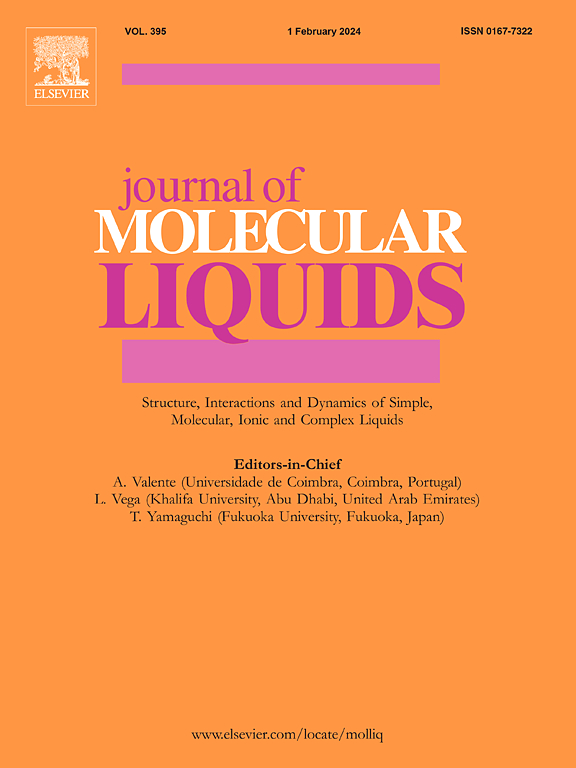Proline concentration driven thermostability and hydration properties of ubiquitin
IF 5.3
2区 化学
Q2 CHEMISTRY, PHYSICAL
引用次数: 0
Abstract
Among the amino acids, proline belongs to the category that acts as a promising excipient for biotherapeutic protein stabilization under environmental stress, prevention for protein aggregation, fibrillation, etc. Understanding the molecular mechanisms by which proline solutions affect protein structures under thermal stress is essential for applications in bioinformatics, pharmaceutical industries, and the design of new excipients. This study aimed to elucidate the role of proline solution on protein structure and dynamics under thermal stress conditions. Atomistic molecular dynamics simulations explored how varying proline concentrations influence a model protein ubiquitin’s thermal unfolding or structural stability. The results revealed that at higher proline concentrations (≥2.5 M) the native-like folded state of ubiquitin is maintained through the structural contacts over the simulation period. In contrast, at lower concentrations (2 M), the stability time is reduced, and the pure water fails to prevent thermal stabilization of the protein and promote unfolding. Free energy profiles and unfolding pathways identified different intermediate states, suggesting that proline modulates protein stability, alters the solvation dynamics, and affects energy barriers for structural transitions compared to that in pure water. This study highlights the concentration-driven dual role of proline solutions; its preferential exclusion from the protein surface enhances hydration, while its self-association impacts the dynamics and structuring of water in the solvation shell. These findings highlight the concentration-dependent osmoprotective behavior of proline and its implications for protein stability, offering insights relevant to designing stabilization strategies for biomolecules under stress conditions.

求助全文
约1分钟内获得全文
求助全文
来源期刊

Journal of Molecular Liquids
化学-物理:原子、分子和化学物理
CiteScore
10.30
自引率
16.70%
发文量
2597
审稿时长
78 days
期刊介绍:
The journal includes papers in the following areas:
– Simple organic liquids and mixtures
– Ionic liquids
– Surfactant solutions (including micelles and vesicles) and liquid interfaces
– Colloidal solutions and nanoparticles
– Thermotropic and lyotropic liquid crystals
– Ferrofluids
– Water, aqueous solutions and other hydrogen-bonded liquids
– Lubricants, polymer solutions and melts
– Molten metals and salts
– Phase transitions and critical phenomena in liquids and confined fluids
– Self assembly in complex liquids.– Biomolecules in solution
The emphasis is on the molecular (or microscopic) understanding of particular liquids or liquid systems, especially concerning structure, dynamics and intermolecular forces. The experimental techniques used may include:
– Conventional spectroscopy (mid-IR and far-IR, Raman, NMR, etc.)
– Non-linear optics and time resolved spectroscopy (psec, fsec, asec, ISRS, etc.)
– Light scattering (Rayleigh, Brillouin, PCS, etc.)
– Dielectric relaxation
– X-ray and neutron scattering and diffraction.
Experimental studies, computer simulations (MD or MC) and analytical theory will be considered for publication; papers just reporting experimental results that do not contribute to the understanding of the fundamentals of molecular and ionic liquids will not be accepted. Only papers of a non-routine nature and advancing the field will be considered for publication.
 求助内容:
求助内容: 应助结果提醒方式:
应助结果提醒方式:


